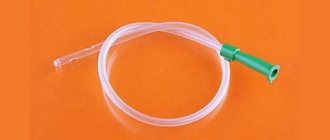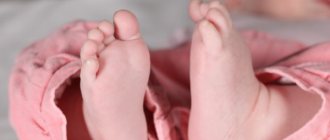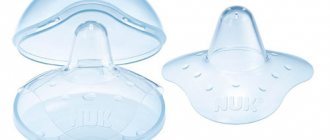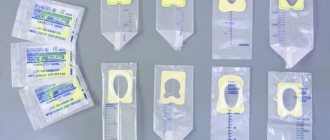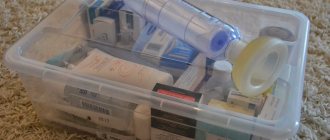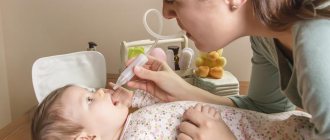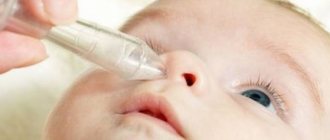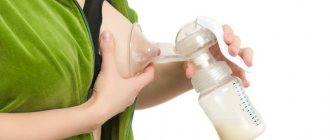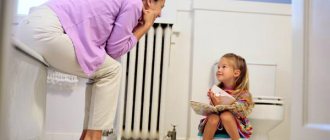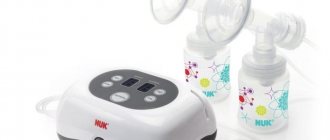In the first aid kit of young parents there will always be devices that can make their life much easier. Such accessories include an aspirator for newborns. This attribute will not be superfluous.
Any child experiences some breathing difficulties in the first months of life. Mucus accumulates in the nasal passages. As a result, the baby experiences discomfort.
Remember your newborn baby and the first nights in the maternity hospital - something is constantly grunting, seething, sniffling in his nose.
The purpose of the aspirator is to remove mucus and clear the nasal passages. In addition, such a care item is simply necessary when a small child has a runny nose, because:
- He doesn't know how to blow his nose yet;
- Choosing safe drops for a baby is not so easy: for more details, see the article Drops for the common cold for a newborn>>>.
Let's figure out which aspirator is best for newborns and how to use the accessory.
How to properly clean a newborn's nose with a runny nose
Newborn babies need constant care. The hygiene of the nasal mucous membranes requires special attention. Infants experience discomfort associated with a runny nose and congestion more severely than adults. Breathing disorders negatively affect the activity, feeding and sleep patterns of babies. Constant whims make parents fearful and want to help. This must be done without harm to health or consequences. You can clean the nose of a newborn baby from dry boogers and snot with an aspirator, a cotton swab or a bulb at home. These are the most popular and safest ways to regain the ability to breathe freely and feel good.
Why clean your child's nose when there is a runny nose or congestion?
The nasal canals in newborns are very narrow. They often become clogged, thereby complicating breathing. Discomfort from a runny nose, accompanied by swelling and copious discharge, causes the child even more discomfort during wakefulness and sleep. The baby does not yet understand that it is possible to switch to mouth breathing and is not able to blow his nose on his own. When sneezing, the nasal passages are cleared of mucus and foreign particles, but the protective reflex may not cope with large accumulations.
When children have a runny nose, they experience constant discomfort and are often capricious. Sniffing with their tiny nose, they, on the contrary, suck in secretions, and this can lead to complications. Otitis media, acute bronchitis, pneumonia and other diseases that are dangerous in infancy may develop.
A runny nose and nasal congestion in newborns provoke increased mucus production or swelling of the nasopharynx. Irritating symptoms are not always signs of colds and viral infections. The cause of many children's troubles can be low indoor humidity, dust accumulation, cigarette smoke, perfume aroma, etc. It is enough to eliminate all negative influences and there will be no need to solve problems associated with nasal congestion. This is good prevention, but if signs of difficulty breathing are already observed, and boogers and snot cause moodiness, poor sleep and appetite, it is necessary to clean the nose and help the baby get rid of discomfort.
Parents should take care of basic hygienic procedures for cleansing mucous membranes during a runny nose. In practice, cleaning a newborn’s nose from snot is not an easy task, especially when the young mother has no experience. All available means are not suitable in this case, since infants require a special approach. Immediately eliminate cotton swabs. Any awkward movement can injure the baby's nose. There are safer devices and procedures with which you can easily restore your breathing and solve the problem of congestion.
How many times a day can a baby's snot be sucked out with an aspirator?
Good nasal breathing is very necessary for a child of the first year of life. Physiologically, a small nose is built in such a way that even a slight swelling of the adenoids or mucous membrane leads to the fact that it becomes difficult for the baby to breathe. Because of this, he constantly wakes up at night because mucus flows into his throat and irritates his diaphragm. A child who cannot breathe through his nose also has problems feeding. After all, he cannot suck the breast and breathe through his mouth at the same time. Therefore, during feeding, the baby is constantly interrupted, greedily inhales air, and gets angry that he cannot eat normally. All this leads to whims, crying and restlessness of the baby. And how parents worry when they see the child’s condition and cannot help him in any way. Well, they can’t blow their nose for the child, can they? In general, a baby will learn to get rid of mucus in the nose on his own only by the age of two, or even later. Until this time, parents must learn how to suck out the snot from their baby on their own.
Several decades ago, when there were no modern nasal aspirators on sale, young mothers had no choice but to suck out snot directly with their mouths. At the same time, there was a high probability of infection from the baby. And there wasn’t much that was pleasant about this method, you’ll agree. Modern products delight us with effective and safe devices with which we can free our children’s noses quickly and efficiently. So, let's look at the main types of nasal aspirators for infants.
Nasal aspirator for cleaning
Cleansing with an aspirator is considered the most effective way. The device is designed specifically for both newborns and children under 2 years of age. It makes it possible to carry out the procedure quickly and hygienically. During cleaning, the baby does not experience discomfort; the sensation is very similar to a slight tickling.
An aspirator is an improved syringe. The mechanical device consists of a container and two tubes. One is inserted into the baby’s nostril, the mother takes the other into her mouth and makes suction movements. All contents are easily and quickly removed into the container. If one procedure is not enough, you can repeat it several times. The main thing is to do everything correctly and carefully.
You can use electronic aspirators equipped with batteries, or vacuum ones that operate on the principle of a vacuum cleaner.
How to pump out thick nasal discharge
Often found in viral and bacterial rhinitis. Before sucking, it is necessary to rinse the nasal passages to make the snot more liquid. This will make removing them much easier. You need to drip a saline solution (Salin or Aquamaris) into your nostrils. For very thick nasal mucus, the procedure can be repeated several times, with an interval of 10-15 minutes.
After rinsing, use a nasal aspirator for final cleaning. A vacuum aspirator will help you quickly pump out snot from your baby. An example of a device is the “Baby-Vac”.
Can be used from the first days of life. The operating principle of a vacuum aspirator is the same as that of devices used in maternity hospitals and children's hospitals. The only difference: instead of a vacuum pump, an ordinary home vacuum cleaner is used.
Made from silicone. At one end of the aspirator there is a soft tip and a mucus flask. The second end of the tube is a special attachment for connecting to a vacuum cleaner.
Thanks to its design, the device automatically reduces the pressure that occurs when the vacuum cleaner is turned on to a safe level. This occurs when the air flow passes through the narrow channels of the tube and collector flask. Uniform suction promotes complete cleansing of all parts of the nose.
- assemble the device;
- insert the tip into the nasal passage;
- turn on the vacuum cleaner;
- slowly move the tip towards the exit of the nose;
- try to keep the aspirator level. Do not allow suction to the side walls and damage to the mucous membrane.
Advantages: high cleaning efficiency and durability of the device. Flaws:
- inability to use outside the home;
- noise when the vacuum cleaner is operating;
- higher risk of traumatizing mucous membranes compared to other aspirators. Although the device is safe, it is more powerful than all previous ones.
It is recommended to use the device in emergency cases (impaired nasal breathing due to a large amount of secretion in the nasal cavity). Excessive use of the aspirator can lead to drying out of the mucous membrane and weakening of its protective properties. Before using any aspirator, you should consult your pediatrician.
Children's nasal aspirator Baby Vac Video instructions for use
VLOG/ Baby has snot?! A vacuum cleaner will help.
Any mother knows how difficult it is to look at a child who has difficulty breathing due to illness. Therefore, we strive to alleviate the child’s suffering at any cost, although some procedures are very dangerous.
Often, at an appointment, a doctor hears the following complaint from a mother: the baby has a runny nose, the child is not breathing, but nothing comes out of the nose, there is snot somewhere inside. This is a rather unpleasant phenomenon, especially for a breastfed baby: the baby simply cannot suckle at the breast, and this is a problem. And then, willy-nilly, the mother will have a desire to use a rubber bulb, pipette or nasal aspirator to extract mucus from her small nose.
Freeing the nose using flagella
You can clean the nose of newborn children with a cotton swab. Homemade flagella are considered the safest option for clearing the nasal passages. You can make them from a cotton pad. Divide it into several parts and twist a miniature turunda corresponding to the size of the nostril passage.
Thin, dense flagella are inserted into the nostril with rotational movements and the contents are slowly extracted. This method helps to quickly remove crusts, but cotton wool may not be able to cope with the abundance of accumulated mucus.
How to suck out snot from a baby
As soon as you notice that mucus is accumulating in your baby, do not hesitate, but begin the procedure as quickly as possible.
- First you need to soften the crusts in the child’s nose to make them easier to remove. To do this, prepare a weak saline solution - half a teaspoon of salt per glass of warm water. Using a pipette, place 1-2 drops into each child's nostril. The baby should be in a semi-sitting position. The saline solution not only helps get rid of snot, but also moisturizes the mucous membrane. After all, crusts in the nose can appear not only from viral diseases, but also due to dry indoor air.
- After 10 minutes, when the water softens the mucus, start using the aspirator. Be sure to read the operating instructions before using the device. Pinch one nostril with your finger and insert the soft nozzle into the other. Be careful and hold the nozzle correctly so that the middle of the tube does not rest against the wall of the mucous membrane - this can lead to microtrauma. After cleaning one nostril, proceed to the second.
- Watch your child's reaction. Surely, he will not like the fact that he has some object sticking out of his nose, he will be capricious and show his dissatisfaction. But if the baby is crying heart-rendingly, most likely you are hurting him. In this case, stop your actions and resume them after some time.
- If thick crusts have formed in the nose, they should be removed with a cotton swab.
- After clearing the nasal passages, give your baby the medications prescribed by the doctor. This is justified if the runny nose is due to a cold. All medicines work much better if they are instilled into a clean nose. Never put breast milk in your nose. It has long been proven that milk is an excellent environment for the development of bacteria, so such a “medicine” will only worsen the situation.
- You should clean your child's nose as needed. This is usually done once every 3-4 hours.
- After use, any aspirator should be thoroughly rinsed and disinfected. If the device has removable disposable attachments, do not reuse them.
If a child has a runny nose of an allergic nature, then you should not suck out the mucus; most likely, it is not there, and congestion occurs due to swelling of the adenoids. In this case, an antihistamine will help. It quickly neutralizes the allergen and relieves swelling.
A runny nose in a child is considered a serious problem, since due to nasal congestion the baby cannot eat or sleep normally. In addition, the physiological features of the structure of children's upper respiratory organs are such that an advanced runny nose easily leads to inflammation of the throat and even otitis media. In addition to suctioning out the mucus, take measures to get rid of a runny nose as quickly as possible - humidify the air, ventilate the room more often, and drink plenty of fluids. And then the runny nose will go away as unnoticed as it appeared.
how to properly clean a newborn's nose
Removing excess with a pear
You can buy a pear at a pharmacy. For newborns, such devices are made with a soft rubber tip. If you cannot find one, a small enema will help you.
Before insertion into the nostril, the balloon is squeezed by hand. This is necessary to ensure that all the air comes out. After inserting the tip into the newborn's nose, slowly open the syringe. Under the influence of vacuum, everything unnecessary is drawn in. Remaining mucus can be removed with a cotton pad. The pear procedure is done without sudden movements, but excessive slowness can interfere with cleansing. Such intervention simply will not have any effect.
If there is too much mucus or thick, opaque discharge, consult a doctor. Such a runny nose can signal the development of a serious illness.
When should you see a doctor?
Is a runny nose accompanied by alarming symptoms? - We need a doctor!
You should contact a specialist immediately in cases where a child’s runny nose does not go away for quite a long time. The doctor will identify the causes of its occurrence and prescribe treatment.
You should also pay special attention to the following symptoms:
- Increased body temperature.
- Appearance of cough.
- Rash all over the body.
- Baby's anxiety.
- Refusal to eat.
If these signs occur, you should immediately contact a specialist, as they may indicate the development of an infectious disease or other pathologies.
You can learn more about how to properly use a nasal aspirator from the video:
Compliance with preventive measures does not provide a 100% guarantee that the child will not get sick, but will significantly reduce the risk of developing the disease and developing a runny nose:
- Experts recommend maintaining sufficient humidity in the children's room and carrying out wet cleaning weekly. You should also ventilate the room daily.
- Aromatherapy also plays a special role in the prevention of colds. The most effective remedies are eucalyptus or tea tree oil.
A runny nose in a newborn can occur for many reasons. It is important to correctly determine what triggered its appearance and begin treatment. You can remove accumulated mucus using nasal aspirators. The choice of model depends on the individual characteristics of the child and his age. Before first use, you can consult a nurse or doctor and carry out the procedure under their supervision.
Share with your friends! Be healthy!
A symptom such as a runny nose is a serious test for a baby. Even a small amount of nasal mucus causes breathing problems, since the diameter of the nasal passages is only 2-3 millimeters. The problem is aggravated by a thick, wide tongue, which makes breathing through the mouth difficult. There are cases where children in the first months of life died with a stuffy nose from asphyxia.
A small child does not know how to blow his nose and clean the nose of a baby or newborn from snot, perhaps only by sucking it out with an aspirator, and if the mucus has dried, with the help of cotton wool. Let’s take a closer look at how to do this safely and effectively.
When carrying out the procedure, you must consider:
- the presence of swelling of the mucous membrane lining the nasal passages;
- consistency and nature of discharge.
Nasal cleaning aids
To treat a runny nose in newborns and clear the nose of mucous secretions, it is better not to resort to medications unnecessarily. Even drugs approved for infants disrupt the functioning of the mucous membranes, cause addiction, allergies and other unpleasant consequences. To avoid overdrying, the nasal passages must be periodically washed and treated with special compounds.
Pharmaceutical saline solutions are very popular among treatment products. Two drops of moisturizing liquid are simply pipetted into the newborn's nose. Such procedures moisturize the mucous membrane and prevent infections from entering the nasopharynx.
You can make the solution yourself. The recipe is simple: dissolve table salt (1 tsp) in warm water (1 liter). The composition of homemade saline solutions is identical to pharmacy ones and is no less effective. They have a disinfecting and drying effect, which is very useful for a runny nose.
Do not overuse rinses. With frequent use of solutions, the mucous membrane becomes irritated and begins to swell. This can lead to chronic rhinitis in a newborn.
Often in newborn babies, after heavy mucous discharge, redness appears near the nostrils. You can lubricate them with special baby ointment and oils. Consider the possibility of allergic reactions. If in doubt, consult your pediatrician.
Why can't you suck out snot?
Firstly, because the nose can be injured: few children will lie quietly during such an unpleasant procedure. Also, sudden suction can cause damage to the capillaries and, as a result, nosebleeds.
Secondly, if you do not calculate the force, you can easily injure the middle ear, creating a pressure difference. This in turn can provoke otitis media.
Thirdly, the human nose is designed in such a way that there is always a small amount of mucus, because it creates local immunity in the nasopharynx. Suctioning snot will provoke even more snot production.
So, there is only one benefit of snot suction: temporary improvement. But is it worth the risk?
How to use a newborn aspirator
The task of parents is to provide their child with not only a happy, but also as healthy a childhood as possible. They have a lot to learn and learn to do. In the home medicine cabinet of most young parents, you will definitely find a wide variety of devices designed to make their lives easier. These include a nasal applicator for newborns.
A nasal aspirator should be in the first aid kit of every family with a small child.
Indications and contraindications
The B.Well aspirator was created not only to remove mucus from the nose of babies. It can also be used by elderly people and people with disabilities. The device allows you to cure rhinitis in a short time. It can be used to effectively eliminate pus from the sinuses, which is quite difficult to remove. In such a situation, high-quality cleaning requires the use of special products.
Any medical device has contraindications, the aspirator is no exception. Doctors prohibit using the device for therapeutic purposes if a person suffers from frequent nosebleeds. Other contraindications include the presence of tumors in the cavity:
- nose;
- nasopharynx;
- paranasal sinuses.
The device cannot be used if the nasal passages are completely obstructed.
Description of the accessory
In the first months of life, any baby has certain breathing problems. Mucus often accumulates in his nasal passages, causing some discomfort. In this situation, the applicator comes to the rescue. It works like a nozzle suction and effectively clears the nasal passages.
According to the principle of operation, the device most closely resembles a pump. In terms of its design, the simplest applicator is a rubber bulb with a special tip. When using the accessory, a discharged pressure is created inside, thanks to which it is possible to quickly and accurately remove mucus from the spout.
The simplest aspirator can be bought inexpensively at a pharmacy
Important ! The applicator must be used in compliance with the manufacturer's instructions and recommendations. Only in this case can you remove all excess from the baby’s nasal passages quickly, effectively and painlessly.
Dry crusts in the nose
A common problem in newborns. The formation of crusts (boogers) is explained by the abundant blood supply to the nasal cavity in the first months of life. Blood circulation contributes to a local increase in temperature. Constant “warming up” of the mucous membrane leads to an increase in the viscosity of the secretion and its drying out.
- hot dry air;
- inhalation of dust;
- abuse of vasoconstrictors;
- deviated nasal septum;
- long stay in a horizontal position.
Mechanical removal of dry crusts from the nasal passage can result in damage to the mucous membrane. Therefore, only cotton wool buds are used for cleaning.
Main stages of the procedure:
- First of all, you need to soak the crusts and moisten your nose. Saline solutions are used for this. Most often used: “Salin”, “Aquamaris”. It is necessary to drip 2-3 drops of saline solution into the nasal passage and wait 5 minutes;
- make flagella. A small piece of sterile cotton wool will be useful for this. Moisten the finished flagellum with saline solution or petroleum jelly;
- Using circular movements, carefully clean the nasal passage and remove the crusts.
You need to act without using force. You cannot clean both nostrils at the same time. It is also prohibited to use cotton swabs - there is a high chance of injuring the mucous membrane if the baby jerks his head while cleaning.
How to clean your baby's nose from snouts
Types of aspirators
You can find a wide selection of aspirators for newborns on sale.
Aspirator-syringe
The device in the form of a syringe is very primitive and incredibly easy to use. It includes a small rubber bulb and a silicone tip. The main disadvantage of this design is the absence of a limiter on the tip, which would reliably protect the child from accidental damage to the tissues of the mucous membrane. In addition, the device is made of completely opaque material, which does not allow you to easily see how effectively the mucus suction process is carried out.
Mechanical aspirator
A mechanical nasal aspirator is a tube equipped with a special reservoir for collecting mucus. The product has a replaceable filter that prevents liquid from entering the child's nose into the parent's mouth. The risk that the baby will be injured during the procedure is also extremely small - the tips are made of soft silicone. This aspirator is easy to use and its cost is very affordable.
A device in the form of a syringe
This type of device is considered the most inexpensive and primitive. The cost of the device is about 50 rubles. This accessory consists of a silicone tip and a small bulb made of rubber.
Using this product is very simple:
- It is necessary to squeeze the rubber bulb.
- Carefully insert the silicone tip into the child's nasal passage.
- Slowly and carefully release the pear. As a result, mucus and secretions will be sucked in along with the air.
- After the procedure, the syringe should be washed well and then boiled.
Terms of use
To effectively relieve your baby of nasal congestion, you should understand how to use a newborn aspirator correctly. The operating principle of different types of devices may vary. There are general rules that should be taken into account.
An electric aspirator can significantly simplify the process of cleaning nasal cavities.
Step-by-step nose cleaning:
Contraindications for use
It is strongly recommended not to use any type of nozzle ejector in the following cases:
Even if the aspirator is very expensive and of high quality, it is not recommended to use it too often
The health of a child is the most precious thing that can be. It should be monitored with the utmost care. Do not forget that excessive effort can cause harm. This also applies to the use of nasal aspirators.
Characteristics
The B.Well WC 150 nasal aspirator is characterized as a compact device that is convenient to hold and use. The presence of two standard batteries eliminates electric shock. The device has a sound device that produces 12 children's melodies to distract the child from a procedure that is not very pleasant for him.
The level of negative pressure created by the aspirator is calculated precisely. This is confirmed by research. The pressure is very gentle and cannot harm the baby’s delicate mucous membranes and blood vessels, but the procedure is performed very effectively. Thanks to the soft tips, the mucous membrane is not injured. There is one button to operate the device, so the process is very simple.
The B.Well aspirator has nozzles made of soft silicone. The set contains two tips of different shapes. One soft silicone nozzle is intended for babies from birth to 6 months, the other - from six months.
The device has a transparent container, so you can see the result and control the process. The colorful design makes the device look like a toy.
An important characteristic is the hygiene of the device. The presence of a special design makes it easy to detach the parts in order to wash them. There is no need to purchase any consumables.
